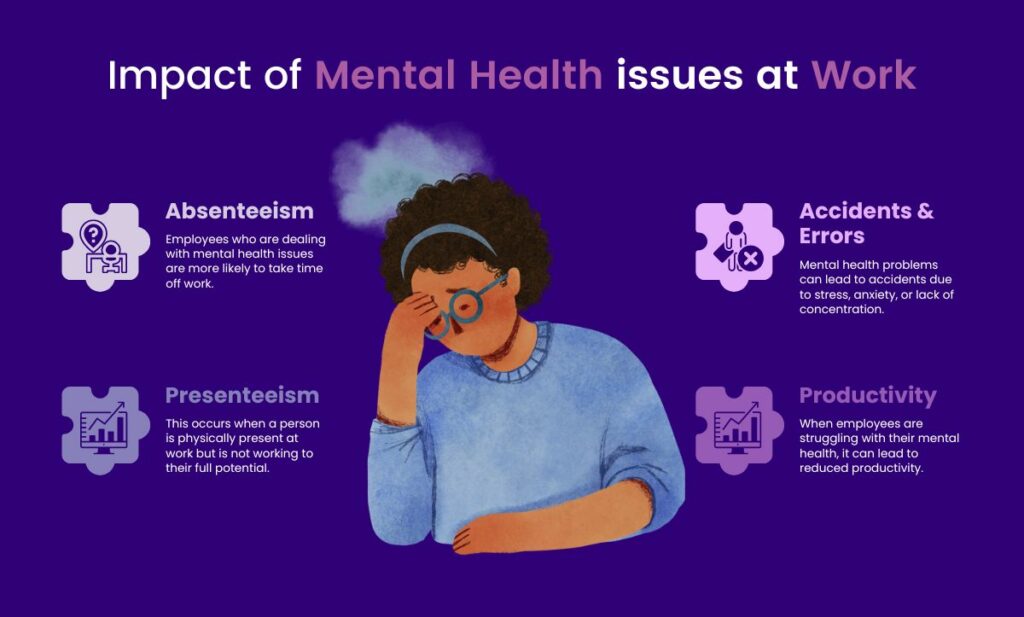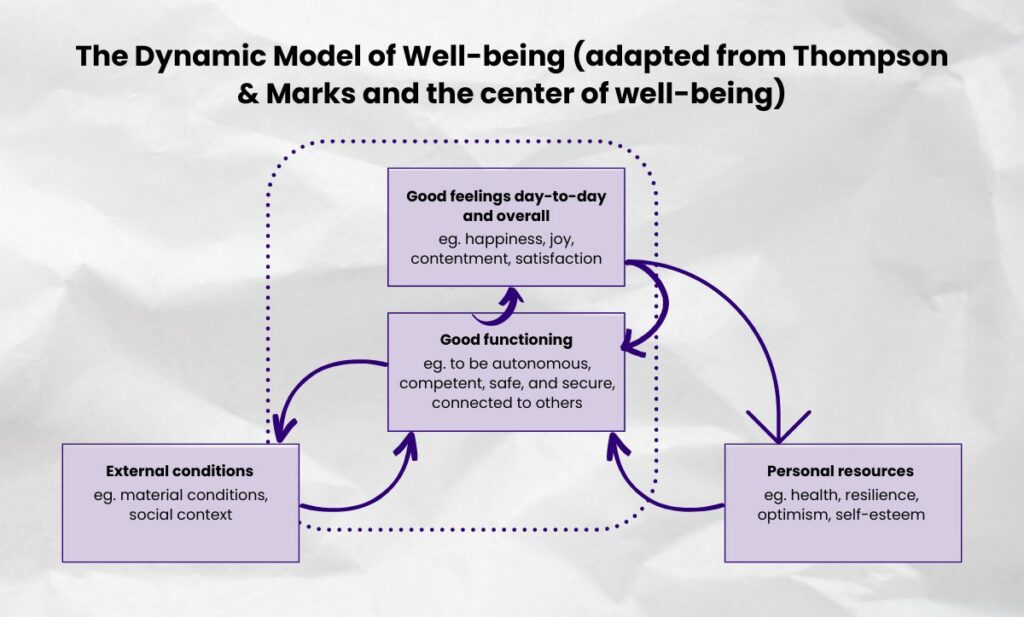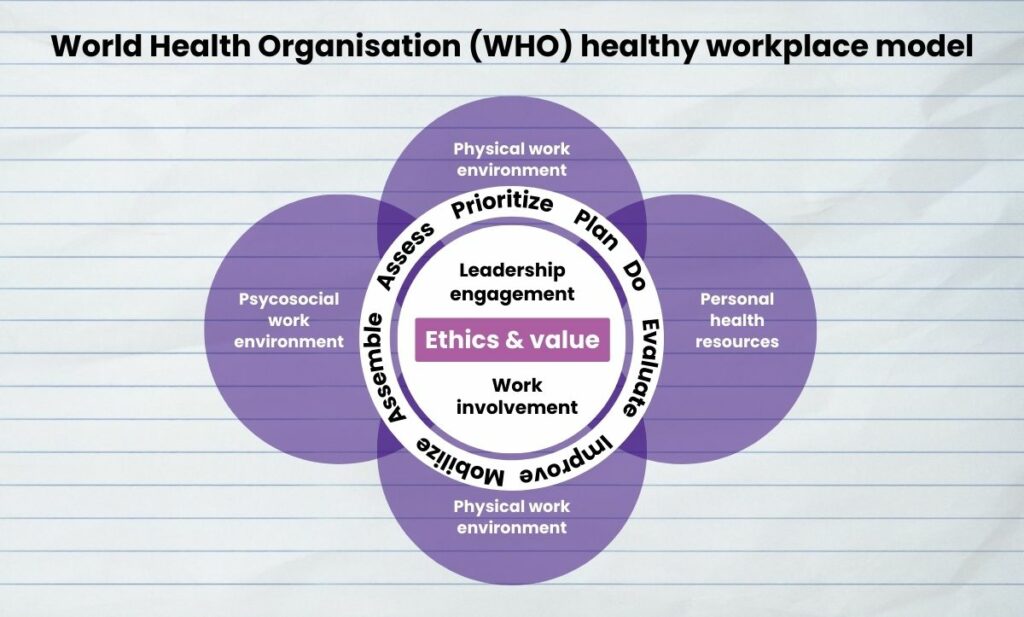
Foster a Culture of Mental Well being in Your Organisation with The Star in Me
The most successful organizations are embracing one thing. They have made it a part of their everyday work culture.
It’s none other than the realization that “a healthy workplace and workforce is a happy and productive one.
The good news is that,
As decision-makers in your organization, you have the power to shape the well-being of your employees. Just like a captain of a ship, you have the ability to steer your organization towards a healthy and thriving work culture, or towards a stormy sea of stress and burnout.
Think of your employees as the engine that keeps your organization moving forward. Just as a car’s engine needs to be maintained and cared for, your employees’ mental health needs to be prioritized and protected.
When the engine is running smoothly, the car can go further and faster. Similarly, when your employees’ mental health is taken care of, they are more productive, innovative, and engaged.
Furthermore, the impact of mental health on the workplace is like a domino effect. When one person is struggling with their mental health, it can quickly spread to other team members, creating a negative ripple effect that can impact the entire organization.
It’s important to remember that mental health is not just an individual issue, it’s a systemic issue. Just as a building’s foundation needs to be strong to support the rest of the structure, your organization’s culture needs to be supportive of mental well-being to ensure the success and longevity of your business.
Just as you wouldn’t ignore a warning light on your car’s dashboard, don’t ignore the warning signs of employee burnout and stress.
Make mental health a top priority and watch your organization thrive.

Make this 16:9 (presentation) size for the blog. And add link in get in touch, i.e. email: hello@thestarinme
Why is mental well being getting attention at work?
Mental well-being has become a critical issue in the workplace as it directly impacts the health and productivity of employees.
In recent years, there has been a growing awareness of the importance of mental health, and organizations are starting to recognize the need to create a supportive and positive work environment that fosters employee well-being.
- One reason mental well-being is getting attention at work is due to the significant impact it has on employee productivity and engagement.
Employees who struggle with mental health issues such as depression and anxiety may experience difficulties concentrating, meeting deadlines, and collaborating with colleagues.
A study by the World Health Organization found that depression and anxiety cost the global economy an estimated $1 trillion per year in lost productivity.
2. Employee well-being is also linked to organizational success. Employees who are happy and satisfied in their roles are more likely to be engaged, motivated, and productive, which can lead to increased revenue, customer satisfaction, and a positive reputation for the organization.
3. Mental well-being is gaining attention in the workplace due to the social responsibility of organizations to promote the overall health and well-being of their employees.
In many cases, employees spend a significant portion of their day at work, and the work environment can significantly impact their mental health.
As such, it is essential for organizations to create a work environment that promotes good mental health and supports employees in dealing with any mental health issues they may face.

Examples of organizations that prioritize mental well-being include Google, which offers mindfulness and meditation classes to its employees, and Starbucks, which provides mental health counseling to all its employees.
In addition, companies such as Microsoft and Deloitte have implemented mental health programs that provide resources and support to employees struggling with mental health issues.
Clearly, mental well-being is getting attention at work.
Also, Read: A guide to corporate training and leadership development programs in 2023
But,
Do we understand mental well-being?
According to the dynamic model of well-being is a framework developed by Thompson and Marks, and the Centre for Well-being, well-being is a dynamic process that involves a complex interplay of various factors, including biological, psychological, social, and environmental factors.
The dynamic model of well-being consists of three interrelated components:
- Feelings: The feelings component of well-being refers to an individual’s emotional experiences and the extent to which they experience positive emotions such as happiness, joy, and contentment, and negative emotions such as sadness, anger, and anxiety.
- Functioning: The functioning component of well-being refers to an individual’s ability to engage in activities that are important to them and to function effectively in their daily lives. This component includes aspects such as physical health, cognitive abilities, and social relationships.
- Resources: The resources component of well-being refers to the internal and external resources that individuals can draw upon to support their well-being. This includes both personal resources such as resilience, self-esteem, and coping skills, as well as external resources such as social support and access to healthcare.
The dynamic model of well-being recognizes that these three components are interrelated and can influence each other in various ways.
For example, a person’s emotional experiences can impact their ability to engage in activities that are important to them, and their access to resources can impact their emotional experiences and functioning.
The model also acknowledges that the factors influencing well-being can change over time and can be influenced by individual, social, and environmental factors.
For instance, changes in social or economic circumstances can impact a person’s access to resources, which can in turn impact their emotional experiences and functioning.
Overall, the dynamic model of well-being provides a comprehensive understanding of the complex interplay of factors that contribute to individual well-being.
It emphasizes the importance of taking a holistic approach to well-being that addresses the various components of well-being and recognizes the dynamic and complex nature of the well-being process.

However, unlike what you believe:
Employee Engagement and Employee Well-being isn’t the Same
While well-being at work and employee engagement are related concepts, they are not the same thing.
Employee engagement is a measure of the level of commitment and motivation that employees have towards their work, while well-being at work is a broader concept that encompasses various aspects of an employee’s physical, emotional, and social health.
Employee engagement focuses on creating a positive work environment that fosters a sense of purpose, belonging, and autonomy for employees.
Engaged employees are more likely to be productive, innovative, and committed to their work. They are also more likely to stay with the organization for the long term, reducing employee turnover rates.
On the other hand, well-being at work encompasses a broader range of factors that impact employees’ physical and emotional health, including their work-life balance, job satisfaction, physical health, mental health, and social support.
A focus on well-being at work acknowledges that employees are whole people with complex needs and recognizes the importance of creating a supportive work environment that promotes employee health and well-being.
Here are some examples to illustrate the difference between employee engagement and well-being at work:
1. An organization that focuses on employee engagement might offer perks like free meals, on-site gym facilities, and flexible work schedules to promote employee satisfaction and motivation.
In contrast, an organization that focuses on well-being at work might offer employee assistance programs, mental health support, and wellness initiatives to promote employee physical and mental health.
2. A manager who focuses on employee engagement might prioritize setting clear performance goals and providing regular feedback to employees to help them feel motivated and invested in their work.
In contrast, a manager who focuses on well-being at work might prioritize workload management, work-life balance, and stress reduction techniques to help employees feel supported and cared for.
3. An employee who is highly engaged may feel a sense of purpose and motivation towards their work, but may also experience high levels of stress and burnout.
In contrast, an employee who experiences well-being at work may feel a sense of fulfillment and balance in their work and personal life, which can lead to better physical and mental health outcomes.
While employee engagement and well-being at work are related concepts, they are not interchangeable.
Focusing on both aspects can lead to a more positive and productive workplace culture that supports employee health and organizational success.
Also, Read: Best Corporate Training & Leadership Development Programs 2023
What are the drivers of well-being at work?
The drivers of well-being at work can be categorized into three main areas: organizational factors, job factors, and individual factors. Here are some examples of each:
- Organizational factors:
- Leadership and management practices: The way managers lead, communicate, and support their teams can have a significant impact on employee well-being. For example, managers who provide regular feedback and recognition, prioritize work-life balance, and support employee growth and development can foster a positive and supportive work culture.
- Organizational culture: The values, beliefs, and norms of an organization can also impact employee well-being. A culture that prioritizes employee well-being and promotes work-life balance can create a more positive and supportive environment.
- Physical work environment: The physical work environment, including lighting, noise levels, air quality, and ergonomic design, can also impact employee well-being. For example, a comfortable and well-lit workspace can reduce eye strain, headaches, and fatigue.
2. Job factors:
- Workload and job demands: The amount of work, deadlines, and expectations placed on employees can impact their well-being. For example, excessive workload and unrealistic deadlines can lead to stress and burnout.
- Job control and autonomy: Employees who have control over their work, including the ability to make decisions and set priorities, tend to experience greater well-being.
- Social support: Having supportive colleagues and positive relationships at work can also impact employee well-being.
3.Individual factors:
- Personal characteristics: Individual factors such as personality, coping styles, and resilience can impact an employee’s ability to manage stress and maintain well-being.
- Lifestyle factors: Lifestyle factors such as exercise, sleep, and nutrition can also impact employee well-being. For example, employees who prioritize exercise and healthy eating tend to have better physical and mental health outcomes.
The drivers of well-being at work are multifaceted and involve organizational, job, and individual factors. By prioritizing these drivers, organizations can create a positive and supportive work environment that promotes employee well-being and organizational success.
What are the strategies that can help foster a culture of mental wellbeing at work?

Here are some examples of strategies that can help foster a culture of mental well-being at work:
- Promote work-life balance: Encourage employees to take time off, avoid working long hours, and prioritize self-care. For example, you could offer employees flexible working arrangements such as remote working, flexible hours, and job-sharing.
You could also encourage employees to use their vacation time by highlighting the importance of taking time off, or by implementing a mandatory vacation policy.
2. Build supportive relationships: Encourage employees to build positive relationships with their colleagues, and provide opportunities for socializing and team-building activities.
For example, you could organize team-building events like after-work socials, team lunches or retreats. You could also consider setting up a mentoring program that pairs employees with mentors to provide support and guidance.
3. Encourage communication: Encourage employees to communicate openly with their managers and colleagues about their mental health and well-being. Create a supportive environment that values open communication, empathy, and active listening.
For example, you could implement an open-door policy where employees feel comfortable approaching their managers about any issues they are facing, or hold regular one-on-one check-ins with employees to gauge their well-being.
4. Provide training and resources: Provide training to managers and employees on topics such as stress management, mental health awareness, and resilience. Provide access to mental health resources, such as employee assistance programs and counseling services.
For example, The Star in Me offers mental health awareness training to your teams so they can recognize signs of mental health issues in their team members and know how to support them.
5. Prioritize workplace safety: Create a safe and healthy work environment that prioritizes physical safety and mental health. This can include ergonomic workstations, adequate lighting, and quiet workspaces.
For example, you could conduct regular safety checks to ensure that the office environment is safe, provide ergonomic chairs and desks to employees, and offer noise-canceling headphones to reduce distractions.
6. Lead by example: Encourage leaders and managers to model healthy behaviors and prioritize their own mental health and well-being. This can include taking breaks, practicing self-care, and promoting a healthy work-life balance.
For example, managers could demonstrate the importance of work-life balance by taking breaks, using their vacation time, and leaving work on time.
7. Provide opportunities for personal and professional development: Provide opportunities for employees to learn new skills, take on new challenges, and grow professionally. This can include mentoring programs, training and development programs, and career development opportunities.
For example, you could offer regular training and development programs to help employees build new skills, or provide opportunities for employees to attend industry events and conferences.
Research Study Findings by New Economics Foundation (NEF): Strategies that Foster Well-being at Work
- Encourage good health: Research shows a positive correlation between good health and well-being. Employers can help their staff achieve good health by promoting physical activity, supporting healthy eating, and ensuring work does not interfere with sleep and vitality.
- Achieve work-life balance: One of the biggest predictors of stress at work is an imbalance between work and personal life. Employers can help their staff achieve a good balance by offering flexible work arrangements.
- Fair compensation: Fair pay is crucial in creating a positive work environment. Employers can ensure that staff is paid fairly within a fixed budget.
- Job security: Job security is a significant factor in job satisfaction. Employers can create a sense of job security by adopting certain approaches.
- Job fit: Employees’ satisfaction with their jobs and their development can be enhanced by ensuring good levels of job fit and skill use.
- Managerial behavior: The behavior of management has a significant impact on well-being. Employers can adopt effective management styles to improve the well-being of their staff.
- Safe working environment: Creating a safe working environment and emphasizing the social value of the organization’s work can increase job satisfaction.
- Control over work: Giving employees greater control over their work can lead to better performance and greater job satisfaction.
- Positive relationships: Improving relationships at work, particularly between staff and managers, and promoting positive feelings can lead to increased job and life satisfaction.
By implementing these strategies, organizations can create a culture of well-being at work and improve the overall satisfaction and productivity of their staff.
What Next?
Partner with The star in me to foster a culture of mental wellness. Leverage our curated workshops, which are designed to promote mental health awareness and leave employees with actionable tips for healthy living.
Get in touch with us at hello@thestarinme.com
